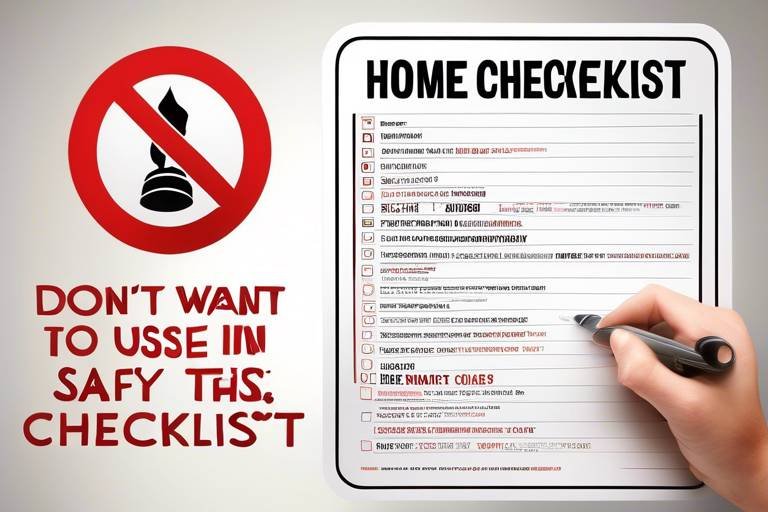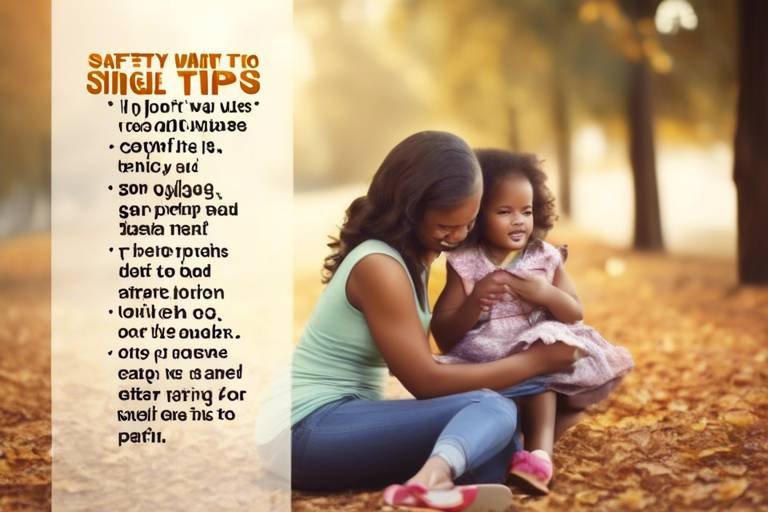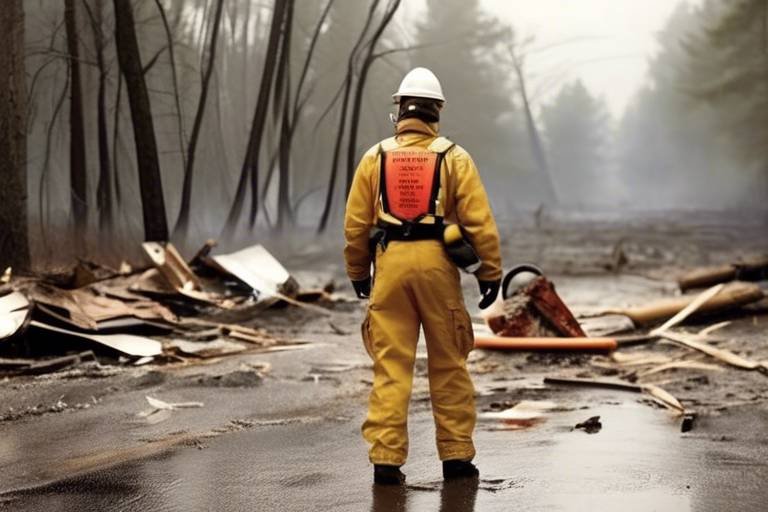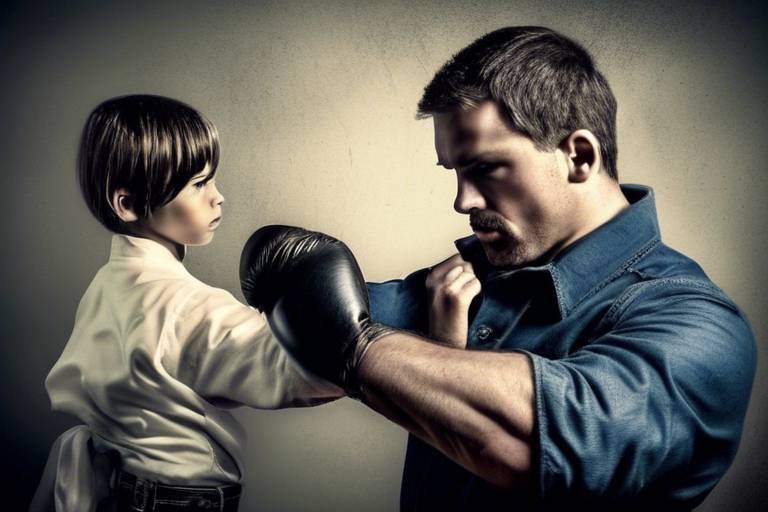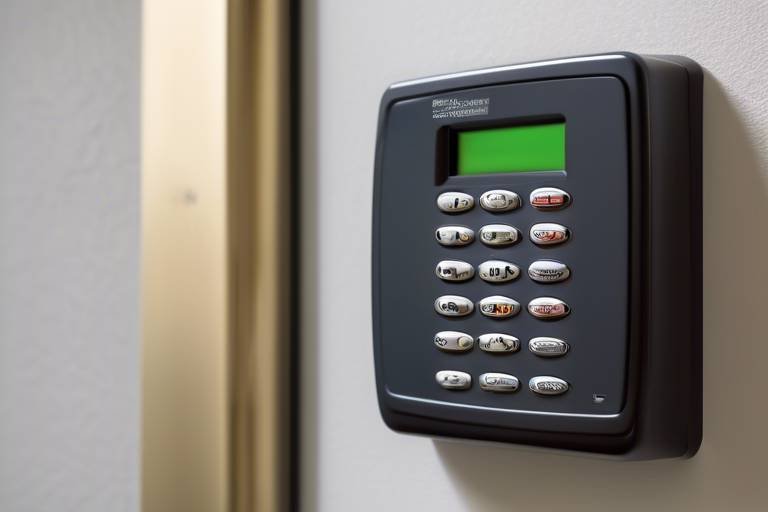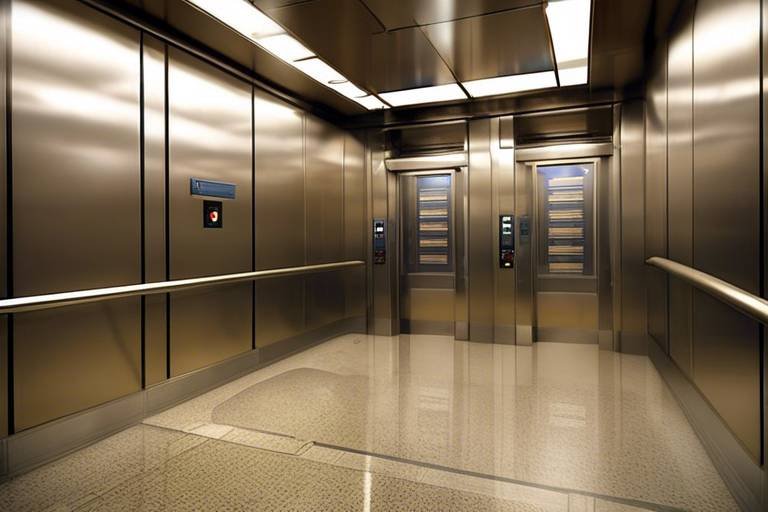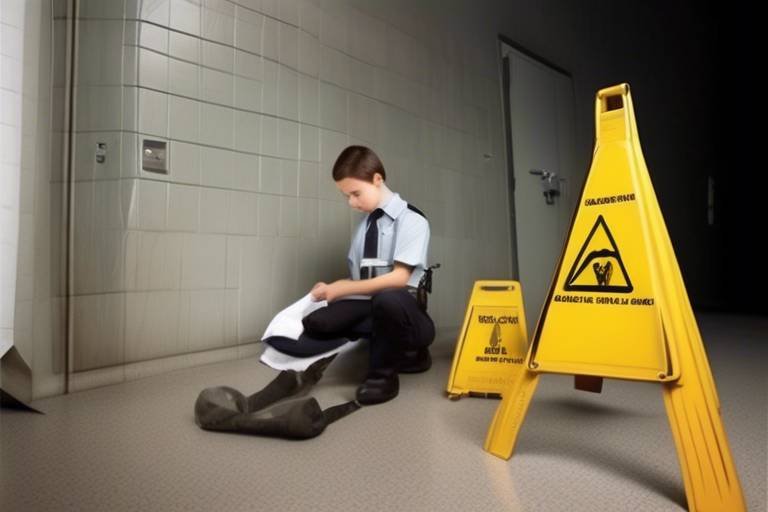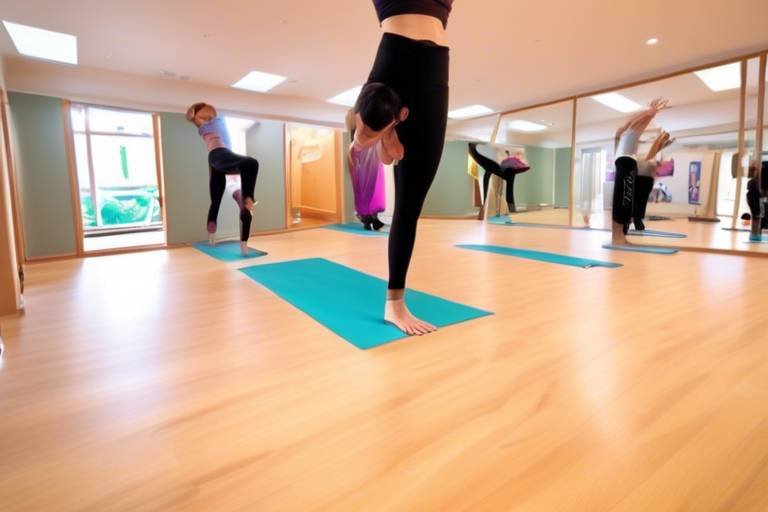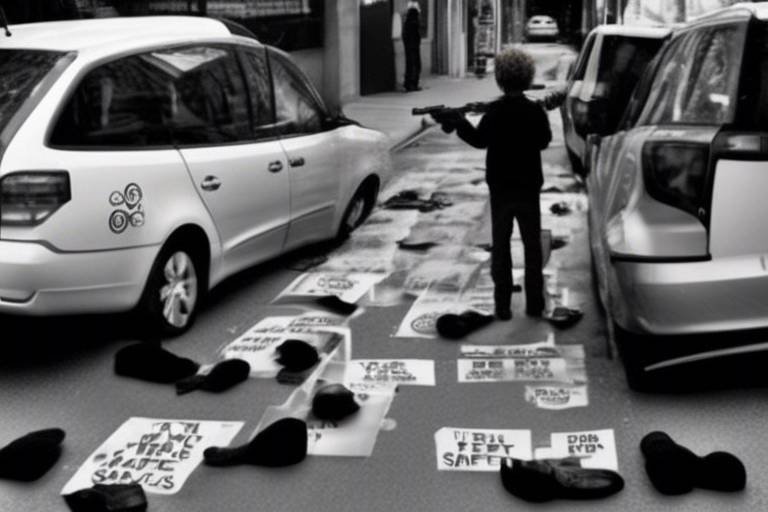The Determining Factors for Personal Safety in High-Risk Areas
This article explores the various elements that influence personal safety in high-risk environments, offering insights into risk assessment, preventive measures, and strategies for enhancing individual security.
High-risk areas are defined by various factors, including crime rates, environmental hazards, and socio-economic conditions. Understanding these elements is crucial for assessing potential dangers and preparing adequately for safety. For instance, a neighborhood with a high crime rate may not only pose direct threats but can also create an atmosphere of fear, making residents more vulnerable. Similarly, areas prone to natural disasters like floods or earthquakes require a different approach to safety. By recognizing these risks, individuals can take proactive steps to safeguard themselves.
Effective risk assessment techniques help individuals identify potential threats and vulnerabilities. This section discusses various methods and tools used to evaluate safety in high-risk situations, enabling better decision-making. One common approach is to conduct a thorough evaluation of the environment, which includes examining both physical and social aspects. For example, understanding the layout of a neighborhood can help in identifying safe routes and potential escape paths in case of emergencies.
Environmental conditions play a significant role in personal safety. Geography, climate, and urban planning can impact safety levels in high-risk areas. For instance, poorly lit streets can increase the likelihood of crime, while well-planned urban spaces with community parks can foster social interaction, thereby enhancing safety through community vigilance. Additionally, weather patterns can also contribute to risks—areas prone to heavy rainfall may face flooding, which can pose significant dangers to residents.
Analyzing crime statistics is essential for understanding safety risks. Local crime data can provide insights into the types of crimes prevalent in an area, helping individuals make informed choices about where to live or visit. For example, if statistics show a rise in burglaries, residents might consider enhancing their home security measures. The following table summarizes key crime statistics that individuals should consider:
| Type of Crime | Frequency | Trend (Increase/Decrease) |
|---|---|---|
| Burglary | 150 incidents/year | Increase |
| Assault | 80 incidents/year | Stable |
| Theft | 200 incidents/year | Decrease |
The dynamics of a community can influence safety perceptions. Engaging with neighbors and participating in community activities can significantly enhance personal safety. When individuals know their neighbors, they are more likely to look out for one another, creating a supportive network that can deter criminal activity. Social cohesion can act as a buffer against crime, as a united community is often more vigilant and responsive to suspicious activities.
Implementing preventive measures is vital for ensuring personal safety. This section outlines various strategies individuals can adopt to mitigate risks in high-risk environments. For example, installing security systems, participating in neighborhood watch programs, and staying informed about local safety initiatives can all contribute to a safer living environment. The more proactive individuals are about their safety, the less vulnerable they become.
Adopting personal safety strategies can significantly reduce risks. This section provides practical tips and techniques for individuals to enhance their safety in potentially dangerous situations. Simple actions like being aware of one’s surroundings, avoiding distractions (like using a phone while walking), and having a safety plan can make a big difference. Think of personal safety as a puzzle—each piece, whether it’s self-defense training or emergency preparedness, contributes to the bigger picture of security.
Learning self-defense is an empowering way to improve personal safety. Various self-defense methods, such as Krav Maga, Brazilian Jiu-Jitsu, or even basic self-defense moves, can be effective in high-risk scenarios. Not only do these techniques equip individuals with the skills to protect themselves, but they also boost confidence and awareness, which are crucial in avoiding dangerous situations.
Being prepared for emergencies can save lives. Having an emergency plan and the necessary tools to respond effectively in high-risk situations is essential. This could include creating a communication plan with family members, assembling a first-aid kit, and knowing the location of the nearest safe spaces. Think of it as preparing for a storm—you may not be able to prevent it, but you can certainly weather it better with the right preparations.
- What are high-risk areas? High-risk areas are locations that are more susceptible to crime, environmental hazards, or socio-economic challenges.
- How can I assess the safety of my neighborhood? Analyze crime statistics, engage with local community members, and observe the environment to assess safety.
- What preventive measures can I take? Consider installing security systems, joining neighborhood watch programs, and staying informed about local safety initiatives.
- Is self-defense training necessary? While not mandatory, self-defense training can significantly enhance your confidence and ability to protect yourself.
- How can I prepare for emergencies? Create a communication plan, assemble an emergency kit, and familiarize yourself with local emergency services.

Understanding High-Risk Areas
High-risk areas are not just places on a map; they are defined by a complex interplay of various factors that can significantly impact personal safety. When we think about high-risk environments, we often picture neighborhoods with high crime rates, but the reality is much broader. These areas can be influenced by crime rates, environmental hazards, and socio-economic conditions. Understanding these elements is crucial for anyone looking to assess potential dangers and prepare adequately for their safety.
To truly grasp what makes an area high-risk, we need to dive deeper into the characteristics that define these locations. For instance, a neighborhood plagued by violence may be classified as high-risk due to its elevated crime rates. However, other factors such as poor infrastructure or lack of community resources can also contribute to an area's risk level. When assessing safety, it's essential to consider the following:
- Crime Rates: Areas with high incidents of theft, assault, or drug-related crimes are often labeled as high-risk.
- Environmental Hazards: Locations prone to natural disasters, such as floods or earthquakes, can pose significant risks to personal safety.
- Socio-Economic Conditions: Communities with high unemployment rates and low educational attainment may experience higher crime rates and instability.
Moreover, the geographical layout of an area can play a significant role in its safety. For instance, urban areas with dense populations might experience more crime due to the sheer number of people. In contrast, rural areas, while they may have lower crime rates, can present their own unique challenges, such as longer response times for emergency services. Understanding the geography and infrastructure of a high-risk area is vital in determining how safe one might feel walking its streets.
Another critical aspect to consider is the community dynamics. A neighborhood with strong social ties and active community engagement can often mitigate risks associated with crime and environmental hazards. When residents know each other and look out for one another, they create a safer environment. Conversely, areas with social isolation and distrust can become breeding grounds for crime and danger.
In summary, understanding high-risk areas requires a multifaceted approach. It's not merely about identifying crime hotspots; it involves a comprehensive evaluation of environmental conditions, socio-economic factors, and community dynamics. By grasping these elements, individuals can better prepare themselves and make informed decisions about their safety in potentially dangerous situations.
Q1: What are some signs that an area is high-risk?
A1: Signs may include visible signs of crime, such as vandalism, abandoned buildings, or a lack of community engagement. Additionally, high crime rates reported by local law enforcement can indicate a high-risk area.
Q2: How can I assess the safety of a neighborhood before moving in?
A2: Research local crime statistics, visit the neighborhood at different times of the day, and talk to current residents to gauge their perceptions of safety.
Q3: Are there any tools available to help assess high-risk areas?
A3: Yes, there are various online platforms and apps that provide crime statistics, community reviews, and safety ratings for neighborhoods.

Risk Assessment Techniques
When it comes to ensuring personal safety in high-risk areas, effective risk assessment techniques are your best allies. Think of risk assessment as your safety compass, guiding you through the murky waters of potential dangers. These techniques help you pinpoint where the risks lie and how best to navigate them. But what exactly does this entail? Essentially, it involves a systematic approach to identifying, analyzing, and evaluating risks that could threaten your safety.
Imagine you're planning a hike through a dense forest known for its wildlife. Before you step foot on the trail, you wouldn't just grab your gear and go; you'd assess the area for potential hazards like steep cliffs, wild animals, or even weather conditions. Similarly, in high-risk environments, you need to gather information and evaluate various factors that could pose a threat to your safety. This is where a combination of techniques comes into play.
One of the most effective methods is conducting a SWOT analysis, which stands for Strengths, Weaknesses, Opportunities, and Threats. By analyzing these four components, you can gain a clearer picture of your surroundings. For instance:
| Component | Description |
|---|---|
| Strengths | What advantages do you have in this environment? |
| Weaknesses | What vulnerabilities could put you at risk? |
| Opportunities | Are there any resources or allies that can enhance your safety? |
| Threats | What external factors could pose a danger to you? |
By understanding these elements, you can make informed decisions. For example, if you know that a certain neighborhood has a high crime rate (a threat), but there’s a community watch program in place (a strength), you can weigh your options more effectively.
Another vital component of risk assessment is environmental scanning. This involves observing and analyzing your surroundings for any immediate threats. Are there poorly lit areas? Is there a lack of foot traffic? Such observations can help you determine the safety of a location. Additionally, utilizing technology can enhance your assessment. Apps that provide real-time crime statistics or alerts about local hazards are invaluable tools. They can help you stay one step ahead of potential dangers.
Furthermore, engaging with local communities can provide insights that statistics alone cannot. Community dynamics play a significant role in personal safety. By talking to residents or joining community forums, you can gather anecdotal evidence about safety concerns that might not be reflected in official reports. This grassroots information is often the most telling.
In conclusion, mastering risk assessment techniques is like equipping yourself with a safety toolkit. By understanding your environment, analyzing threats and opportunities, and staying engaged with the community, you can significantly enhance your personal safety in high-risk areas. Remember, safety isn't just about reacting to threats—it's about anticipating them and taking proactive steps to mitigate risks.
- What is the most effective risk assessment technique?
It varies by situation, but a combination of SWOT analysis and environmental scanning is often most effective. - How can technology aid in risk assessment?
Apps that provide real-time information about crime rates and local hazards can greatly enhance your situational awareness. - Why is community engagement important for personal safety?
Local insights can reveal safety concerns that statistics might overlook, giving you a more comprehensive understanding of your environment.

Environmental Factors
The environment we live in plays a crucial role in determining our personal safety, particularly in high-risk areas. Think of it like a game of chess; every piece on the board, from the terrain to the climate, can influence the outcome of your safety. For instance, urban areas with high population density can lead to increased crime rates, while rural regions might expose individuals to natural hazards such as floods or wildfires. Understanding these factors is essential for anyone looking to navigate potentially dangerous environments.
Geography is one of the most significant environmental factors affecting safety. Areas prone to natural disasters, like earthquakes or hurricanes, inherently pose greater risks to residents. Urban planning also plays a vital role; poorly designed neighborhoods can create hotspots for crime and violence. For instance, areas with inadequate street lighting or limited visibility are often more vulnerable to criminal activities. Additionally, the layout of a city can either facilitate or hinder emergency response times, making it critical for residents to be aware of their surroundings.
Climate conditions, too, can impact personal safety. For example, extreme weather events can lead to dangerous situations, such as flooding or heatwaves, which may not only threaten physical safety but also strain local resources. Furthermore, seasonal changes can affect crime rates; studies have shown that certain types of crimes, like theft, tend to spike during the summer months when people are more likely to leave their homes unattended.
To illustrate the connection between environmental factors and personal safety, consider the following table that outlines various environmental elements and their potential impacts:
| Environmental Factor | Potential Impact on Safety |
|---|---|
| Geography | Increases vulnerability to natural disasters and crime hotspots. |
| Urban Planning | Affects visibility and accessibility for emergency services. |
| Climate | Influences frequency of extreme weather events and seasonal crime patterns. |
In summary, understanding environmental factors is not just about being aware of your surroundings; it's about actively assessing the risks they present. By taking the time to analyze how geography, climate, and urban planning affect personal safety, individuals can make informed decisions and adopt strategies that enhance their security in high-risk areas. After all, knowledge is power, and in the realm of personal safety, it can mean the difference between being a victim and being prepared.
- What are high-risk areas? High-risk areas are locations characterized by elevated crime rates, environmental hazards, or socio-economic challenges that pose threats to personal safety.
- How can I assess the risks in my area? You can assess risks by researching local crime statistics, evaluating environmental conditions, and understanding community dynamics.
- What preventive measures can I take for safety? Implementing strategies such as staying aware of your surroundings, engaging with your community, and having an emergency plan can significantly enhance your safety.

Crime Statistics
When it comes to assessing personal safety in high-risk areas, serve as a vital compass. They not only provide a snapshot of the current safety landscape but also help individuals make informed decisions about their surroundings. Imagine walking through a neighborhood where the crime rates are soaring; without proper data, you might feel a sense of false security or, conversely, unwarranted fear. Thus, understanding the nuances of crime statistics is essential.
Crime statistics can be broken down into several key components, including violent crimes, property crimes, and drug-related offenses. Each of these categories offers unique insights into the safety of a community. For instance, a neighborhood may have high property crime rates due to theft and burglary, but low violent crime rates, which could influence your decision to live or visit there. It's like looking at a weather report; just because it's sunny doesn't mean there's no chance of a storm later!
To illustrate the significance of crime statistics, consider the following table, which compares crime rates in three different neighborhoods:
| Neighborhood | Violent Crimes (per 1,000 residents) | Property Crimes (per 1,000 residents) | Drug-Related Offenses (per 1,000 residents) |
|---|---|---|---|
| Neighborhood A | 5.2 | 15.4 | 3.1 |
| Neighborhood B | 2.1 | 8.7 | 1.5 |
| Neighborhood C | 8.3 | 12.0 | 4.8 |
This table highlights how different neighborhoods can present vastly different safety profiles. For example, Neighborhood C has a higher rate of violent crimes compared to Neighborhood B, which could raise red flags for anyone considering a visit or relocation. On the other hand, Neighborhood A shows a concerning property crime rate, which might deter potential residents who value their belongings.
Moreover, it's essential to consider the source of crime statistics. Local law enforcement agencies, government reports, and community safety organizations are typically reliable sources. However, be cautious of data that may be outdated or misrepresented. It's like trying to navigate a city with an old map; you might find yourself in places you didn't intend to go!
In conclusion, crime statistics are not just numbers; they are a reflection of community safety and well-being. By understanding these statistics, you can make more informed choices about where to live, work, or even visit. Remember, knowledge is power, and in the realm of personal safety, it can be the difference between feeling secure and being caught off guard.
- What are crime statistics? Crime statistics are numerical data that represent the incidence of crime in a specific area over a given period.
- How can I access crime statistics for my neighborhood? You can access crime statistics through local police department websites, community safety reports, or government databases.
- Why are crime statistics important for personal safety? They help individuals assess the safety of an area, make informed decisions, and adopt preventive measures to enhance their security.

Community Dynamics
When we talk about , we're diving into the intricate web of relationships, interactions, and social structures that exist within a given area. These dynamics can significantly influence personal safety, especially in high-risk environments. Think of a community as a living organism; its health and vitality depend on the interconnections among its members. A tightly-knit community often fosters a sense of belonging and mutual support, which can act as a protective shield against crime and other dangers.
In high-risk areas, the presence of strong community ties can enhance safety in several ways. For instance, when neighbors know each other, they are more likely to look out for one another. This vigilance can deter criminal activities, as potential wrongdoers may think twice if they know that residents are attentive and engaged. Moreover, community engagement initiatives, such as neighborhood watch programs or local events, can strengthen these bonds and amplify the collective sense of security.
On the flip side, communities that are fragmented or lack social cohesion may experience heightened risks. In such environments, individuals might feel isolated and less inclined to report suspicious activities or seek help during emergencies. This disconnection can lead to a vicious cycle where fear and mistrust breed further disengagement, ultimately compromising personal safety. Therefore, fostering a supportive community environment is not just beneficial; it is essential for enhancing safety.
To illustrate the impact of community dynamics on safety, consider the following factors:
- Social Cohesion: Communities that engage in regular social activities tend to be safer, as they promote trust and cooperation among members.
- Communication: Open lines of communication within a community can facilitate quick responses to threats, whether they are environmental or criminal in nature.
- Collective Efficacy: This term refers to a community's ability to work together to achieve common goals, which can include enhancing safety through shared initiatives.
In conclusion, understanding community dynamics is crucial for anyone looking to enhance their personal safety in high-risk areas. By recognizing the importance of social ties and community engagement, individuals can take proactive steps to create a safer environment for themselves and their neighbors. Remember, safety isn't just a personal endeavor; it's a collective responsibility that thrives on the strength of community bonds.
Q: How can I get involved in my community to enhance safety?
A: You can participate in local events, join neighborhood watch programs, or simply introduce yourself to your neighbors to build stronger relationships.
Q: What are some signs of a strong community?
A: A strong community often displays high levels of engagement, active participation in local events, and a general sense of trust among its members.
Q: How does social media impact community dynamics?
A: Social media can both positively and negatively affect community dynamics. While it can facilitate communication and engagement, it can also lead to misinformation and division if not used responsibly.

Preventive Measures
When it comes to personal safety in high-risk areas, taking is not just smart—it's essential. Imagine walking through a bustling city where the streets are teeming with people, but lurking in the shadows are potential threats. By implementing a proactive approach, you can significantly reduce your chances of becoming a victim. So, what exactly can you do to safeguard yourself?
First off, awareness is key. Being aware of your surroundings can make all the difference. This means not just looking out for suspicious behavior, but also understanding the environment you're in. For example, familiarize yourself with the layout of the area, know the safe routes, and identify places where you can seek help if needed. Think of it as being a detective in your own life—always on the lookout for clues that could indicate danger.
Another crucial preventive measure is to establish a safety network. Surround yourself with friends, family, or community members who share your commitment to safety. This network can serve as a support system, providing assistance in times of need. You might even consider creating a buddy system where you look out for each other, especially in unfamiliar or risky places. Just like a lifeline in turbulent waters, having trusted individuals around you can provide peace of mind.
Moreover, investing in personal safety tools can be a game-changer. Items like pepper spray, personal alarms, or even safety apps on your smartphone can enhance your personal security. These tools act as your first line of defense, giving you the ability to react quickly in dangerous situations. Think of them as your trusty sidekicks, always ready to assist when you need them most.
Education is another powerful preventive measure. Taking self-defense classes not only equips you with the skills to protect yourself but also boosts your confidence. Imagine walking into a room filled with strangers, knowing that you have the ability to defend yourself if necessary. This confidence can be a deterrent to potential threats, as many attackers seek out those who appear vulnerable.
Lastly, don't underestimate the power of planning and preparation. Having an emergency plan in place can be a lifesaver. This involves knowing what to do in various scenarios, whether it's a natural disaster or an unexpected confrontation. Create a detailed action plan that includes escape routes, emergency contacts, and essential items to have on hand. You can even create a simple table to outline your emergency plan:
| Situation | Action Steps | Emergency Contacts |
|---|---|---|
| Natural Disaster | Seek shelter, follow evacuation routes | Local authorities, family members |
| Personal Attack | Use self-defense techniques, escape | Friends, local police |
| Medical Emergency | Call for help, administer first aid | Emergency services, family |
In conclusion, preventive measures are not just about being reactive; they are about being proactive. By staying aware, building a safety network, investing in tools, educating yourself, and planning ahead, you can create a robust defense against potential threats. Remember, safety is a journey, not a destination. The more prepared you are, the more equipped you'll be to navigate high-risk environments with confidence.
Q: What are some quick ways to enhance my personal safety?
A: Always stay aware of your surroundings, travel in groups when possible, and keep your personal safety tools handy.
Q: How can I find self-defense classes in my area?
A: Check local community centers, gyms, or online platforms for self-defense classes tailored to your needs.
Q: What should I include in my emergency plan?
A: Your emergency plan should include escape routes, emergency contacts, and a list of essential items to have on hand.
Q: Are personal safety apps effective?
A: Yes, personal safety apps can provide real-time alerts, location tracking, and emergency contacts, enhancing your safety.

Personal Safety Strategies
In a world where unpredictability lurks around every corner, adopting is not just wise; it's essential. Think of these strategies as your personal shield, a way to navigate through potentially dangerous situations with confidence and awareness. The reality is that safety is not merely about reacting to threats but proactively preparing for them. So, what can you do to enhance your personal safety?
First and foremost, awareness is your best friend. Being aware of your surroundings can significantly reduce your risk of encountering dangerous situations. This means not just looking around but really observing. Are there people lingering suspiciously? Is the area well-lit? Are there escape routes available? When you train yourself to be aware, you become less of a target and more of a vigilant participant in your environment.
Additionally, consider the power of self-defense. Learning self-defense techniques can be incredibly empowering. It's not just about fighting back; it's about building confidence and understanding your own physical capabilities. Many local community centers offer classes ranging from martial arts to basic self-defense. Even a few lessons can equip you with the skills to protect yourself if necessary.
Another crucial aspect of personal safety is having a well-thought-out emergency plan. This plan should outline what to do in various scenarios, such as getting lost, facing an intruder, or encountering a natural disaster. For instance, if you find yourself in a high-risk situation, knowing who to call, where to go, and how to get there can make all the difference. Create a simple table to outline your emergency contacts, escape routes, and safe locations:
| Emergency Contact | Phone Number | Location |
|---|---|---|
| Local Police | 911 | N/A |
| Friend/Family | (555) 123-4567 | Nearest Safe House |
| Emergency Services | 911 | N/A |
Moreover, consider utilizing technology to bolster your safety. There are numerous apps designed to enhance personal security. These apps can share your location with trusted contacts, send alerts in case of emergencies, or even provide a direct line to local authorities. Just imagine having a virtual safety net at your fingertips!
Lastly, but certainly not least, engage with your community. A strong sense of community can act as a powerful deterrent against crime. When neighbors know each other, they are more likely to look out for one another. Join local groups or neighborhood watch programs to foster connections. Not only will you be enhancing your safety, but you'll also be building a supportive network that can act in times of need.
In conclusion, personal safety is a multifaceted endeavor that requires a proactive approach. By being aware, learning self-defense, having an emergency plan, utilizing technology, and engaging with your community, you can significantly enhance your safety in high-risk areas. Remember, the goal is not to live in fear but to empower yourself with knowledge and strategies that keep you safe.
Q1: What should I do if I feel unsafe in a public place?
A1: If you feel unsafe, trust your instincts. Move to a well-lit area, stay close to other people, and consider calling a friend or family member to let them know your location.
Q2: How can I find self-defense classes in my area?
A2: Check local community centers, gyms, or martial arts studios. Many offer introductory classes that are perfect for beginners.
Q3: What apps are recommended for personal safety?
A3: Some popular safety apps include Life360, bSafe, and Noonlight. These apps can help you share your location and send alerts in emergencies.

Self-Defense Techniques
When it comes to personal safety, knowing how to defend yourself is not just a skill—it's a vital part of your overall strategy for staying safe, especially in high-risk areas. Self-defense techniques empower you, giving you the confidence to face potential threats head-on. But what exactly does self-defense entail? It's more than just throwing punches or kicks; it involves awareness, technique, and the ability to stay calm under pressure. Whether you're walking home at night or navigating through a crowded area, being prepared can make all the difference.
One of the most effective self-defense techniques is understanding your surroundings. This concept, often referred to as situational awareness, means being alert to what’s happening around you. For instance, if you notice someone following you, instead of panicking, you can take proactive steps to ensure your safety. This might include changing your route, heading into a public space, or contacting someone for help. Remember, the best defense is often avoiding confrontation altogether.
In addition to awareness, practical self-defense skills are crucial. There are various martial arts and self-defense classes available that teach techniques suitable for all skill levels. Here are some popular self-defense techniques you might consider learning:
- Krav Maga: Developed for the Israeli military, this martial art focuses on real-world situations and emphasizes quick, efficient techniques.
- Brazilian Jiu-Jitsu: This grappling-based martial art teaches you how to control an opponent, making it effective even against larger attackers.
- Self-Defense Classes: Many community centers offer self-defense classes tailored for civilians, focusing on practical techniques and strategies.
Moreover, practicing these techniques regularly can enhance your muscle memory, making it easier to react instinctively in a high-pressure situation. Self-defense is not just about physical strength; it’s about technique, strategy, and mental preparedness. In fact, many experts argue that the psychological aspect—such as maintaining a confident demeanor and projecting assertiveness—can deter potential attackers even before a confrontation occurs.
It's also essential to understand the legal implications of self-defense. Laws vary by location, and knowing your rights can help you make informed decisions in critical moments. Always aim to use self-defense techniques as a last resort; the goal is to escape and seek safety, not to engage in a fight.
Lastly, consider carrying self-defense tools like pepper spray or a personal alarm. These can provide an additional layer of security without requiring physical confrontation. However, ensure that you are familiar with how to use these tools effectively and legally. Remember, being prepared is not just about having the right techniques; it’s about having the right mindset and tools at your disposal.
Q: What is the best self-defense technique for beginners?
A: For beginners, techniques that focus on situational awareness and simple, effective moves—like those taught in Krav Maga—are often recommended. Look for local classes that emphasize practical self-defense skills.
Q: Do I need to be physically strong to defend myself?
A: Not necessarily! Many self-defense techniques rely on leverage and technique rather than brute strength. Training can help you learn how to use your body effectively, regardless of your physical size.
Q: How can I stay calm during a confrontation?
A: Practicing mindfulness and breathing techniques can help you maintain composure in stressful situations. Regular self-defense training can also build your confidence and ability to stay calm under pressure.

Emergency Preparedness
When it comes to personal safety, being prepared for emergencies is not just a luxury—it's a necessity. Imagine you're in a high-risk area, and suddenly, a natural disaster strikes or an unexpected incident occurs. What would you do? Would you panic, or would you confidently execute a well-thought-out plan? Emergency preparedness is your ticket to the latter. It empowers you to respond effectively, minimizing panic and maximizing safety.
To kick things off, let's talk about the essentials of an emergency plan. Having a solid plan means knowing what to do before, during, and after an incident. This involves identifying potential risks in your surroundings—be it earthquakes, floods, or civil unrest—and preparing accordingly. It’s like preparing for a big exam: you wouldn’t just show up without studying, right? You’d gather your materials, review your notes, and maybe even practice with a friend. In the same vein, you need to gather your emergency supplies and rehearse your plan with family and friends.
Now, what should your emergency kit include? Here’s a quick rundown of vital items:
- Water: At least one gallon per person per day for three days.
- Non-perishable food: Enough to last for at least three days.
- First aid kit: Including bandages, antiseptics, and any necessary medications.
- Flashlight: With extra batteries, because you never know when the power might go out.
- Multi-tool: A handy gadget can be a lifesaver in various situations.
But it’s not just about having supplies; it’s also about knowing how to use them. For example, do you know how to administer first aid? Are you familiar with your local emergency contacts? These are crucial skills that can make a world of difference in a crisis. Think of it as learning to ride a bike; you wouldn’t just hop on without some practice, would you? You’d want to know how to balance, steer, and brake. Similarly, practice your emergency procedures so that everyone involved knows their role.
Moreover, communication is key during emergencies. Establish a family communication plan that outlines how you will contact each other and where you will meet if separated. In a world where everyone seems glued to their phones, it’s surprising how often we forget to discuss these critical details. Make sure everyone is on the same page—like a well-rehearsed team ready to tackle a big project. This way, you’ll avoid confusion and ensure that everyone knows what to do, even when chaos reigns.
Lastly, don’t forget to review and update your emergency plan regularly. Just like you wouldn’t wear last year’s fashion to a party, your emergency plan should evolve as your circumstances change. New family members, changes in residence, or even shifts in local hazards can all impact your preparedness. Regularly check your supplies and ensure that everything is up to date. This proactive approach is akin to maintaining your car; you wouldn’t wait for it to break down before getting it serviced, right?
In conclusion, emergency preparedness is about more than just having a kit; it’s about cultivating a mindset of readiness. By planning ahead, practicing your strategies, and keeping your supplies updated, you set yourself up for success in high-risk situations. Remember, the goal is to turn what could be a chaotic experience into one where you feel in control and confident. So, are you ready to take the first step towards being prepared?
Q: What should I include in my emergency kit?
A: Your emergency kit should include essentials like water, non-perishable food, a first aid kit, flashlight, batteries, and a multi-tool.
Q: How often should I review my emergency plan?
A: It's best to review your emergency plan at least once a year or whenever there are significant changes in your family or living situation.
Q: What is the best way to communicate during an emergency?
A: Establish a family communication plan that includes how to contact each other and where to meet in case of separation.
Q: Why is practicing my emergency plan important?
A: Practicing your emergency plan ensures everyone knows their role and can act quickly and effectively during a crisis.
Frequently Asked Questions
- What defines a high-risk area?
A high-risk area is typically characterized by elevated crime rates, environmental hazards, and socio-economic challenges. Understanding these factors is crucial for individuals looking to assess their safety in such environments.
- How can I assess risks in my surroundings?
Risk assessment can be done through various techniques such as analyzing local crime statistics, observing environmental conditions, and engaging with community dynamics. Tools like safety apps and local reports can also provide valuable insights.
- What role do crime statistics play in personal safety?
Crime statistics are essential for understanding the safety landscape of an area. They help individuals make informed decisions about where to live, work, or visit, allowing for better preparation and risk mitigation.
- How does community engagement enhance safety?
Community engagement fosters social cohesion, which can significantly enhance personal safety. When individuals feel connected and involved in their community, they are more likely to look out for one another, leading to a safer environment.
- What preventive measures can I take for personal safety?
Preventive measures include staying aware of your surroundings, avoiding risky areas, and implementing safety strategies like self-defense training and emergency preparedness plans. These steps can significantly reduce potential risks.
- Are self-defense techniques effective in high-risk situations?
Yes, learning self-defense can be an empowering way to enhance personal safety. Techniques can provide individuals with the confidence and skills needed to protect themselves in potentially dangerous situations.
- Why is emergency preparedness important?
Emergency preparedness is crucial because it equips individuals with the knowledge and tools to respond effectively during crises. Having a plan in place can save lives and minimize panic in high-risk scenarios.


